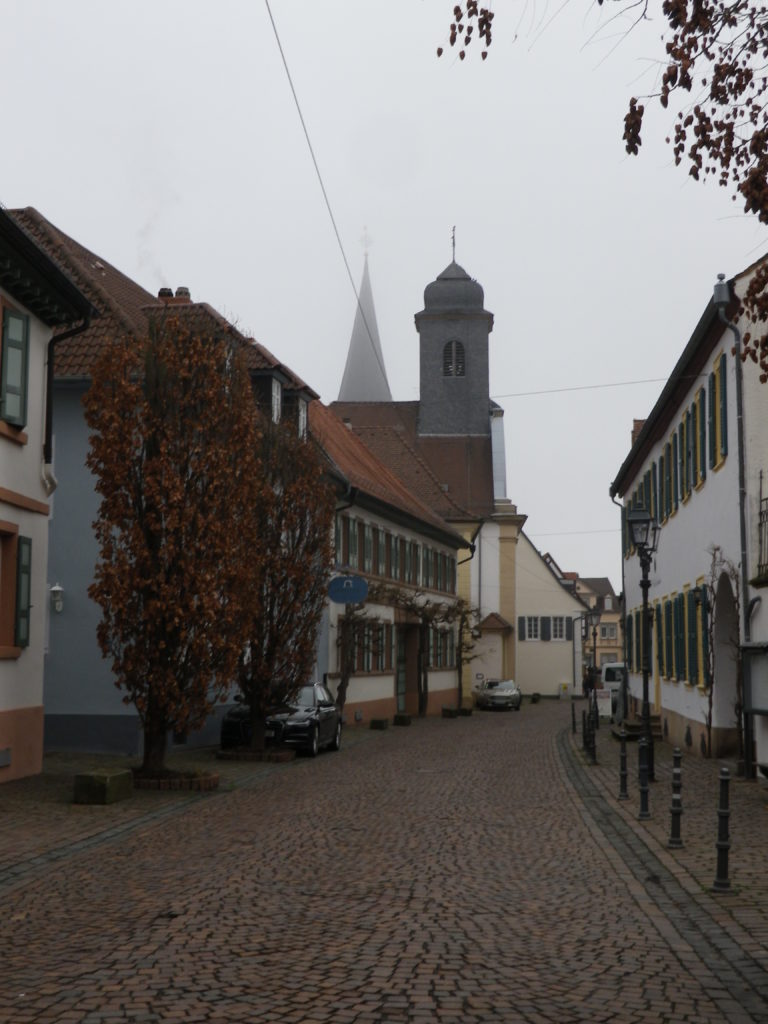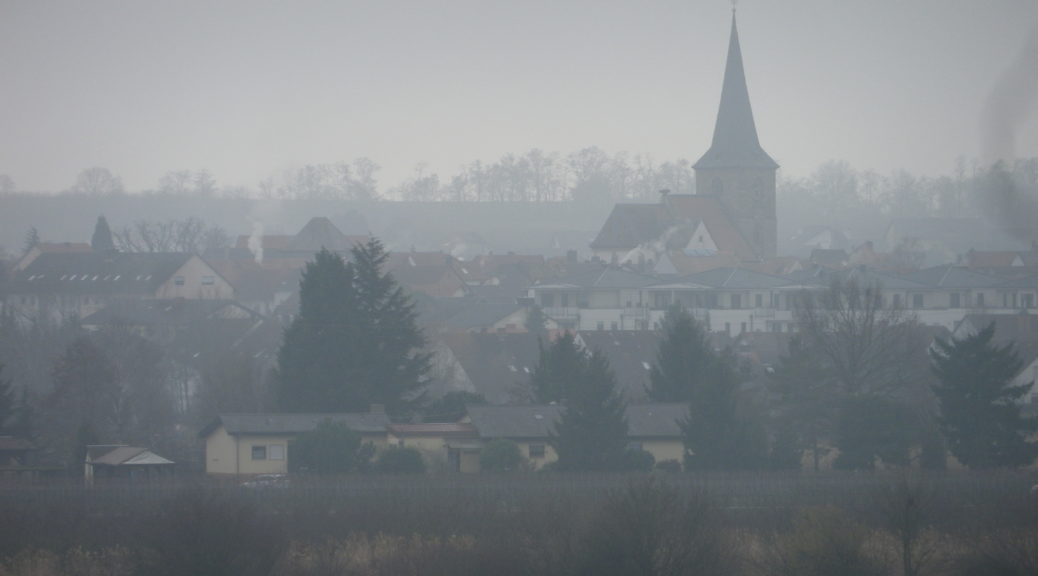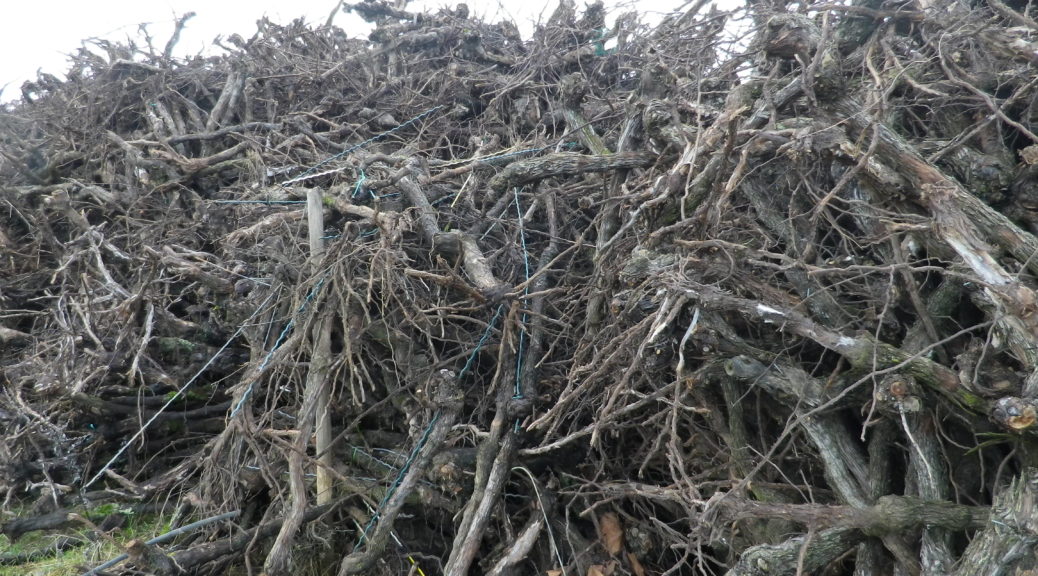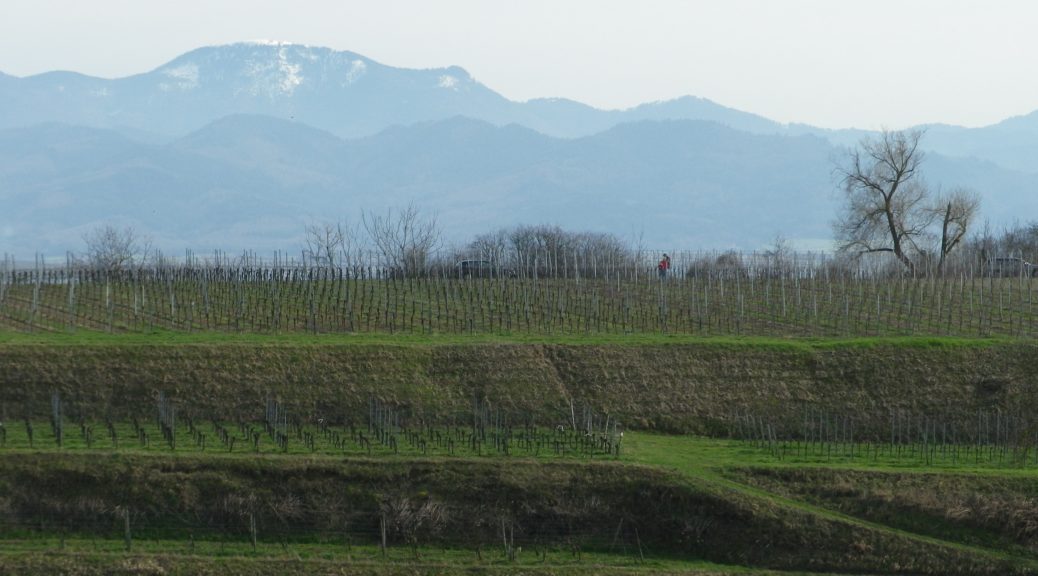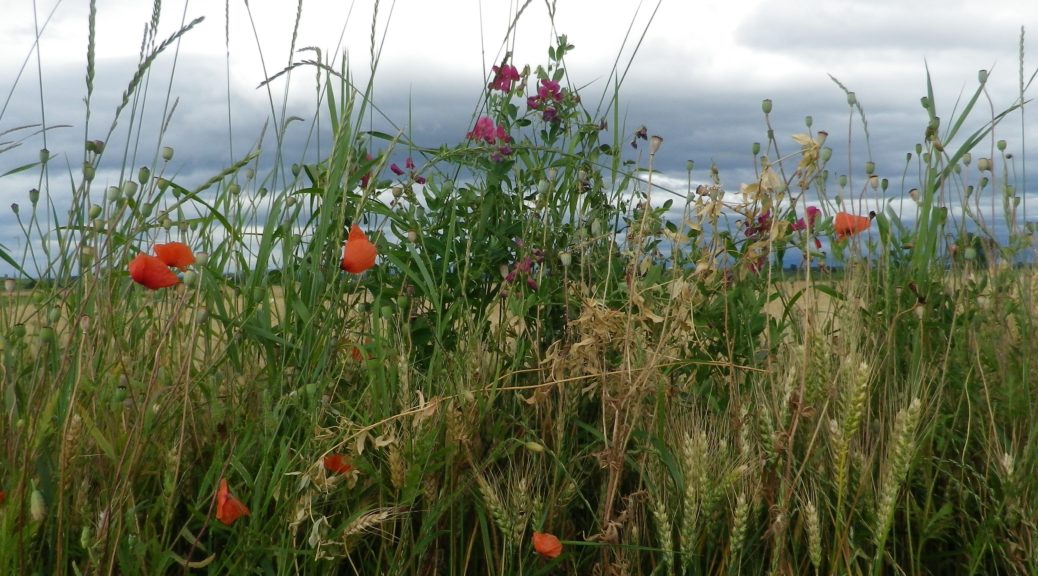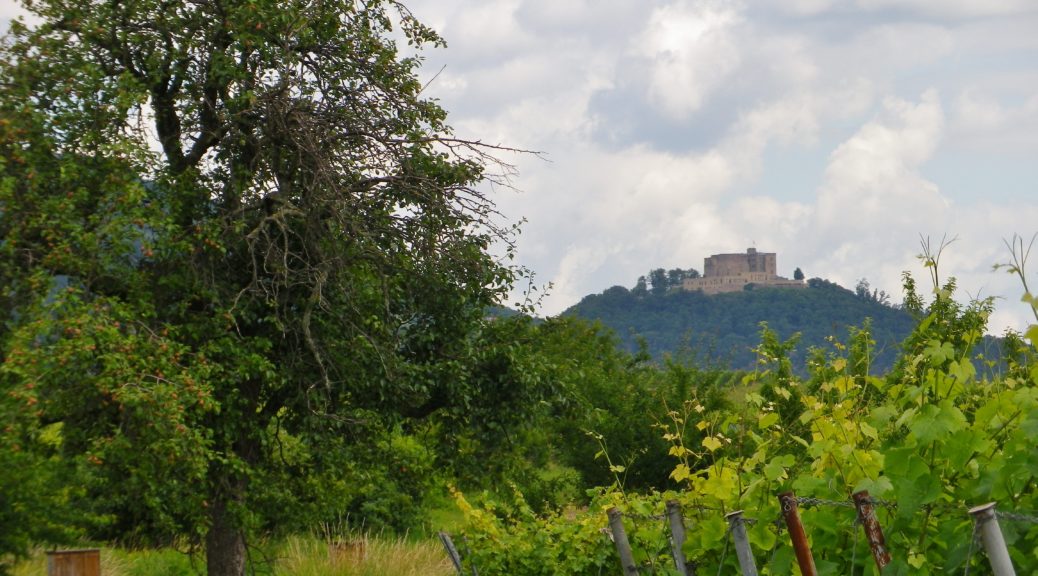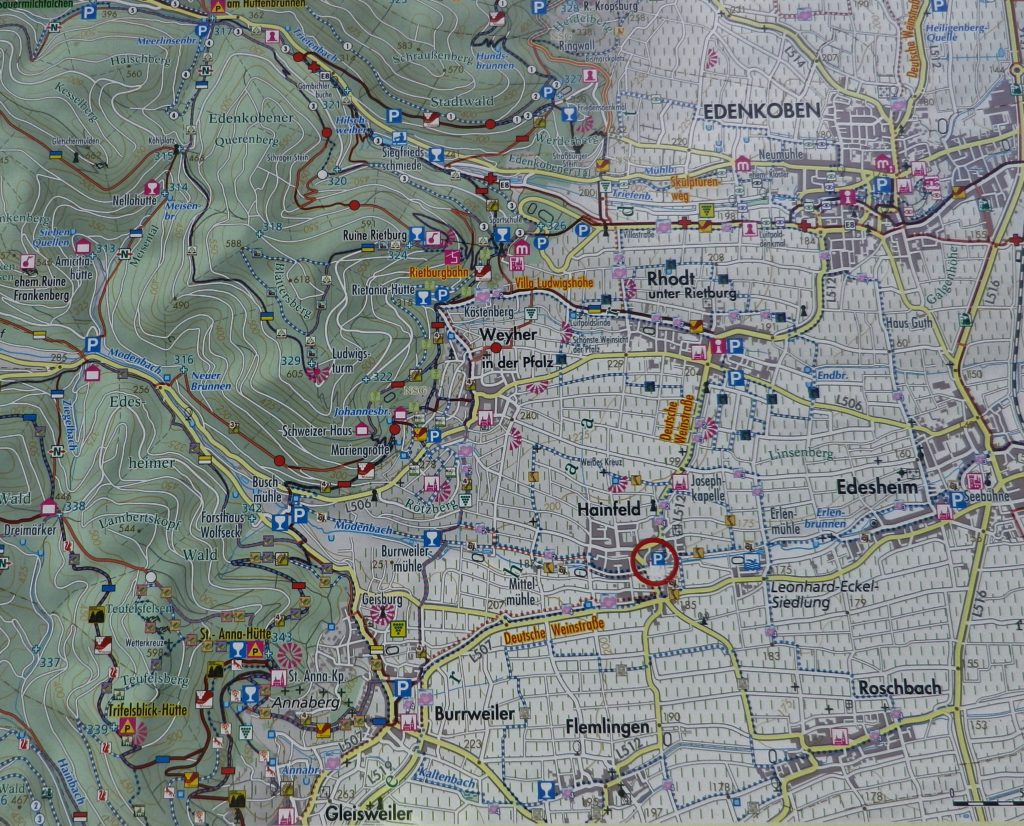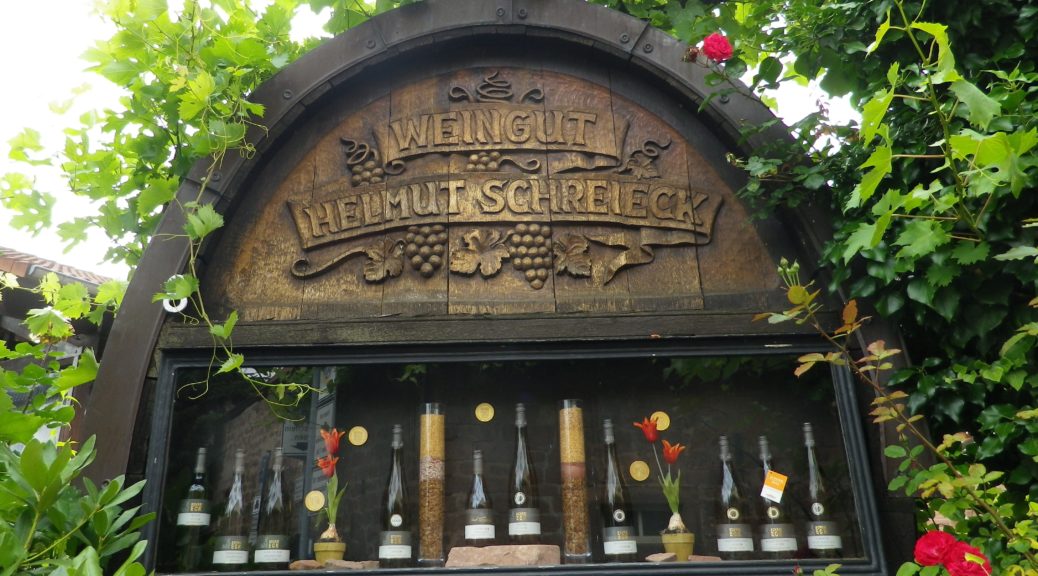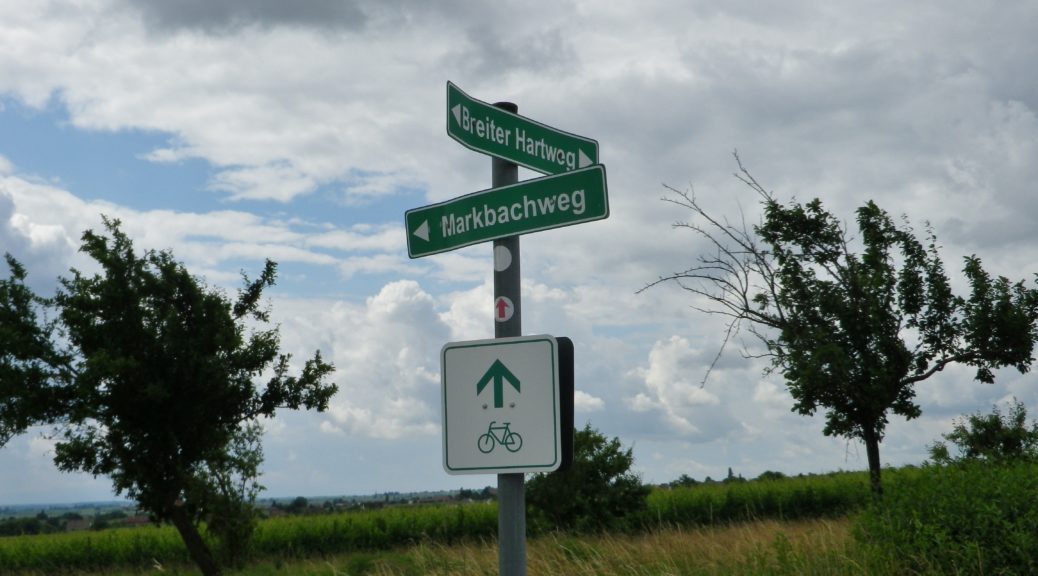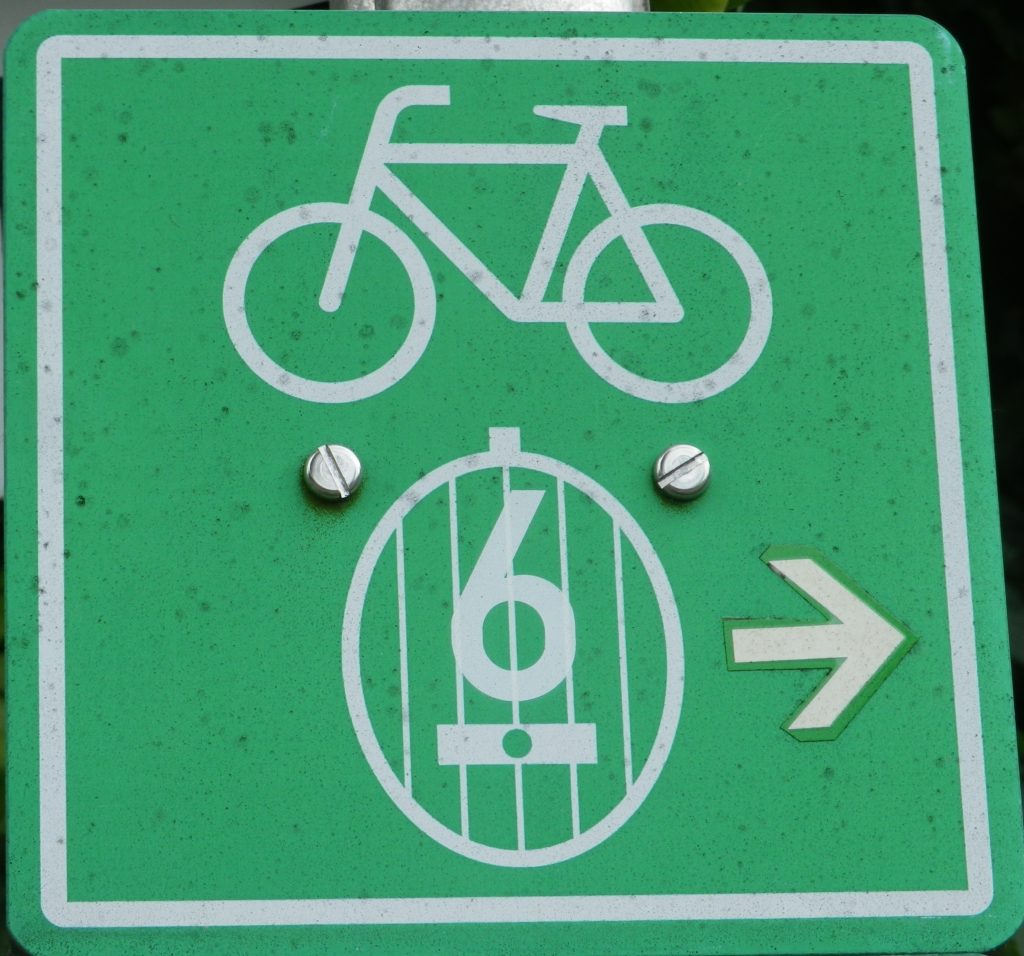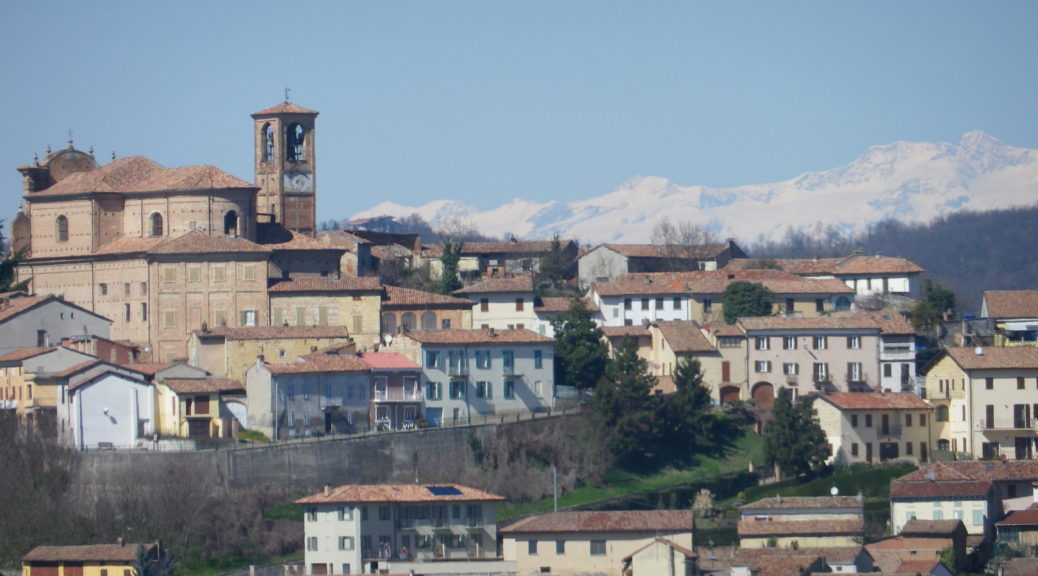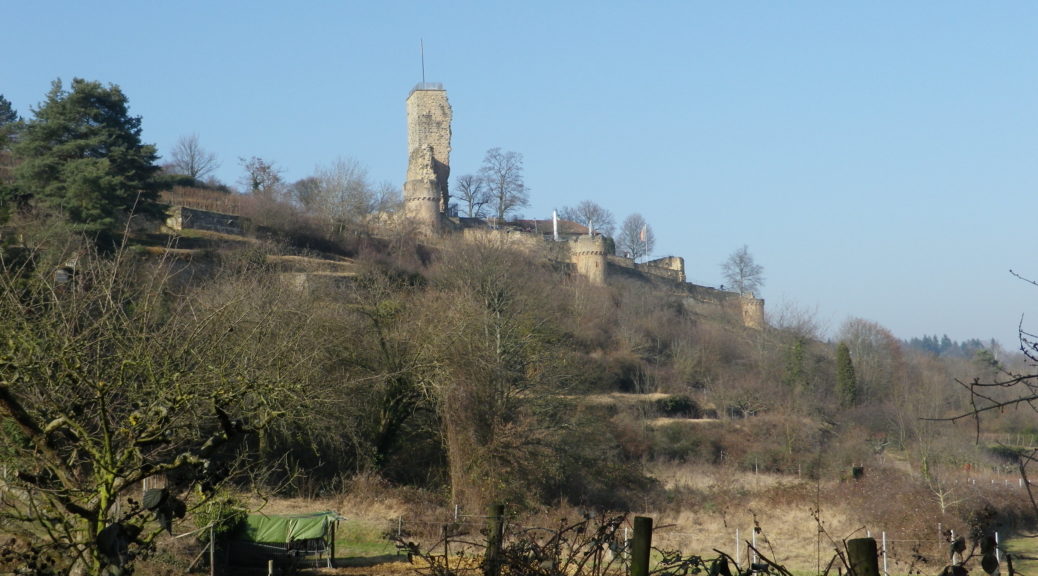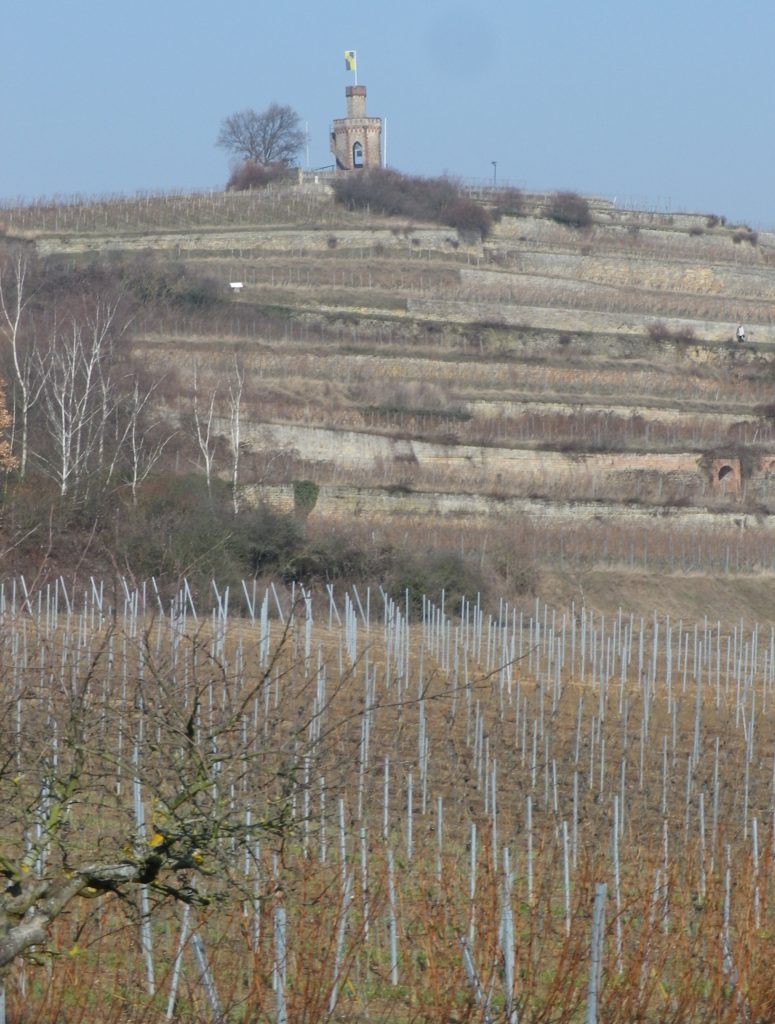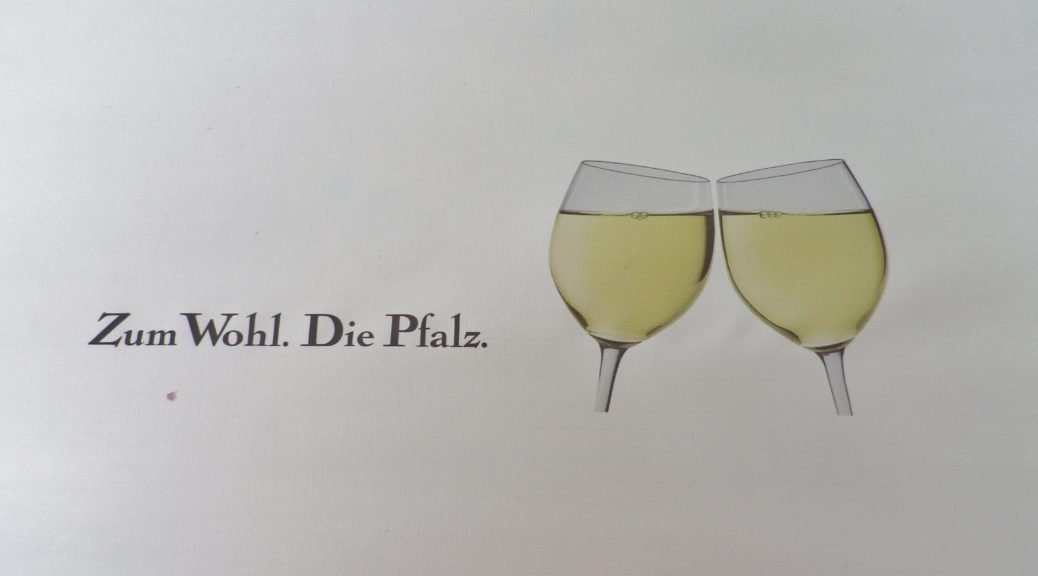When the itinerant musicians of Mackenbach, in the Pfalz, crested the ridge from the northwest, they beheld the town of Freinsheim below. They announced their arrival with lively music, letting the town know they had arrived. Over the next couple of days, they would play, for coins, wine and food. Freinsheim, one of the northern most wine villages on the Deutsche Weinstrasse, has named this section of vineyard the “Musikanten-Buckel”, or the hump of hill where the musicians began to play. Freinsheim is also one of many villages along the Deutsche Weinstrasse that has several festivals throughout the year. Two of them involve “wine wandering”, which is how I came be in the village.
Traditionally, the January wine wandering trail follows mostly along an established trail called the Musikantenbuckel Wanderweg. But every year, on the last weekend of January, the trail is identified as the Rotweinwanderung (Red wine wandering). So, on a cold, dark and grey winter afternoon, I, and hundreds of other people, dressed warmly, with sturdy waterproof boots, set off along the trail, which starts in the village.
